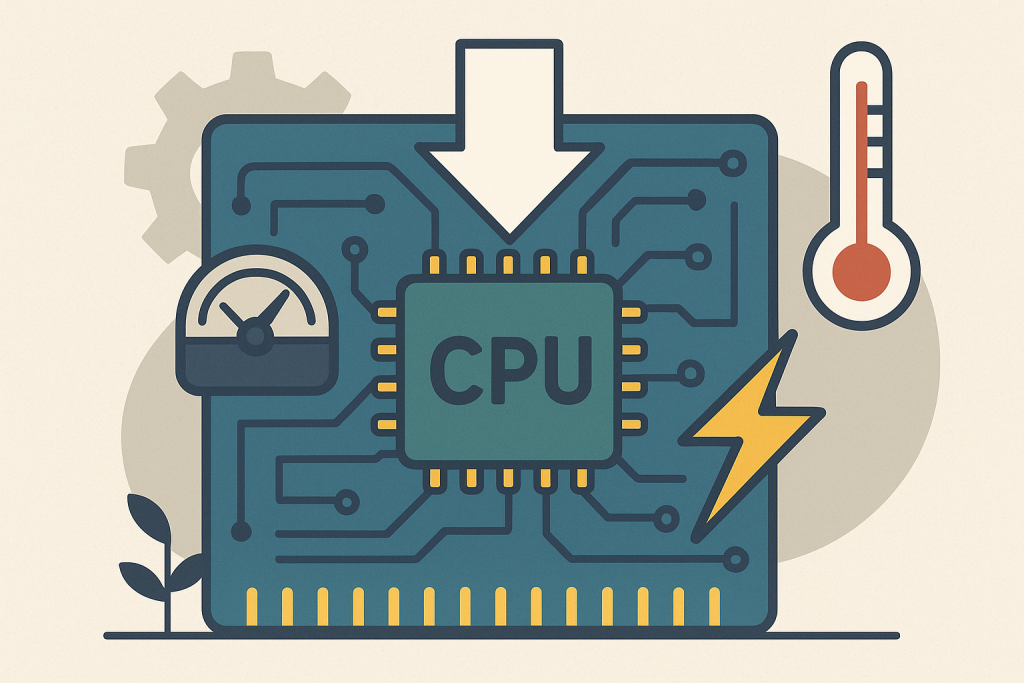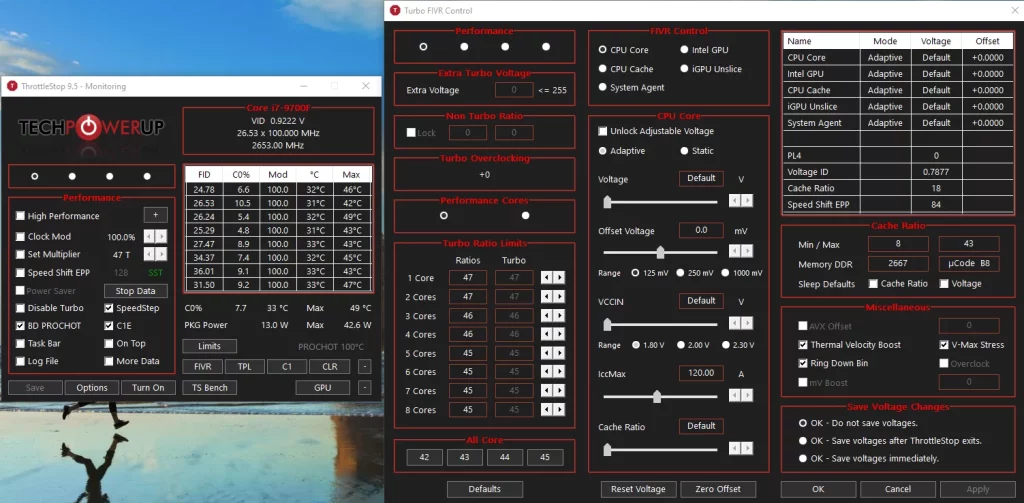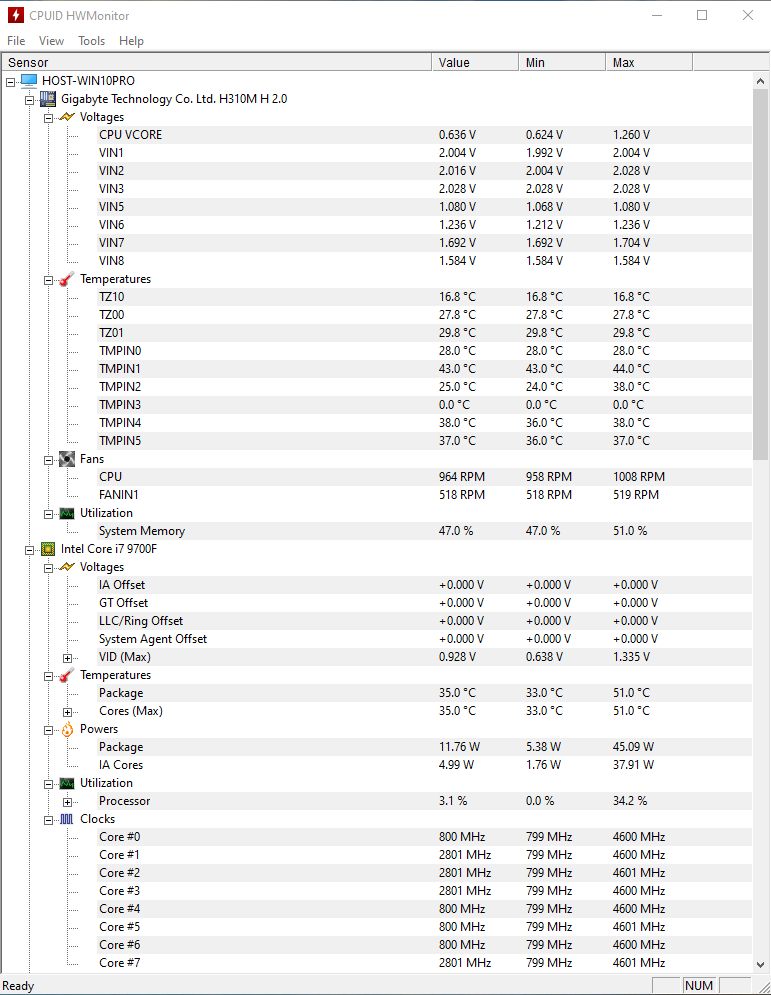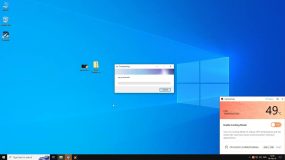If you’ve been searching for ways to make your computer run cooler and more efficiently, undervolting your CPU could be the perfect solution.
This process involves adjusting the voltage supplied to your CPU, reducing heat and power consumption without sacrificing performance when done correctly.

We look closer at how undervolting works and the steps involved in doing it right.
How Undervolting Works
Undervolting CPU means decreasing the voltage provided to your CPU. The philosophy is to reduce the amount of heat that’s generated and lower the power usage for the processor.
Unlike in underclocking, which basically slows down the CPU’s clock speed, in undervolting, it stays intact and performs more efficiently.
Modern CPUs are designed to deal with a range of voltages; therefore, dropping the voltage within safe limits normally doesn’t hamper performance. Instead, that means your CPU can operate at full capacity with less heating.
Successfully Undervolting: Steps Involved
With a view to undervolt a CPU, you need software capable of adjusting the voltage settings, such as Intel XTU or Throttlestop for Intel CPUs.
Begin with the installation of the required software and open it to enter your CPU settings. Start by decreasing voltage in small steps, usually 5 to 10 millivolts at a time.
Run system stability tests after each change; common stress-testing software includes Prime95 and AIDA64. Monitor the temperatures and performance during these tests to make sure that changes will not affect your system negatively.
Benefits of Undervolting a CPU
Undervolting CPU offers several advantages:
- Less Heat Generation: A much cooler-running system means greater thermal efficiency.
- Less Power Usage: Great for laptops, it would prevent battery depletion.
- Longer Hardware Life Span: Lower usage in heat and power reduces wear on components.
- Quiet Operation: Less heat means your cooling fans don’t need to work quite as much, making the system quieter.
Tips for Successful Undervolting
To achieve the best results, keep these tips in mind:
- Make small adjustments in voltage to avoid instability.
- Periodical testing on the system to ensure it remains stable.
- Utilize reputable software in regards to temperature monitoring and system performance.
- Keep your CPU drivers updated to avoid conflicts while doing the undervolting process.
For better stability and to avoid unexpected crashes, you can use Outbyte PC Repair to optimize your system and ensure it’s in peak condition before undervolting.
Risks Associated with Undervolting
While undervolting is generally safe, there are one or two risks:
- System Instability: If the voltage is reduced too much, your system may crash or fail to boot.
- Hardware Compatibility: Voltage adjustments do not quite sit well with all CPUs.
- Increased Troubleshooting Time: Finding the optimal voltage setting can be time-consuming.
💡 Pro Tip: If you want to keep an eye on your CPU’s temperature and performance while experimenting with undervolting, Camomile tool can help track changes in real time and alert you before instability becomes an issue.
Difference Between Undervolting, Underclocking, and Overclocking
- Undervolting reduces the voltage of the CPU without touching clock speed, trying to lower temperatures and power usage.
- Underclocking reduces CPU clock speed. Performance is usually lost, while gaining power efficiency.
- Overclocking: This increases the clock speed to enable better performance; however, it might generate more heat, hence a need for more cooling.
Undervolting in Different CPU Models
Not all CPUs undervolt the same. Most Intel processors are capable of undervolting using Intel XTU, while AMD processors may require changing in BIOS. Always check with your CPU manufacturer’s instructions before making changes.
Practical Tips for Successful Undervolting
- Start Small and Monitor Stability
Go with conservative adjustments of voltage with the aim of preventing system instability from arising. Cut back gradually on voltage in small steps while observing the performance and temperatures of your system. - Performance and Temperature Monitoring
Monitor your CPU temperature and performance using some reliable software such as HWMonitor or Core Temp. This helps a person to be sure the undervolting process is both safe and effective. - Select the Proper Undervolting Tools
Popular tools for undervolting include Intel-undervolt, ThrottleStop, and Intel XTU. With certain specifications, each would work best for certain CPU models and the needs of the user.
Note: The undervolting with utilities like Intel XTU or ThrottleStop may turn out to void the warranty of your device. Always check your warranty terms and manufacturer guidelines before proceeding.
Intel-undervolt
Intel-undervolt is specifically for Intel CPU undervolting, Haswell and later mainly, working by poking into MSR and MCHBAR registers. It allows undervolting by bringing up additional functions that allow editing power and temperature limits. It doesn’t work on CPUs newer than Tiger Lake but does work with intel_pstate.
Installation and Configuration
Install the tool named intel-undervolt. Configure by editing the /etc/intel-undervolt.conf file.
For example, an undervolt of -100mV to the CPU Cache can be set. Test Configuration: After saving the configuration file, use the tool to apply settings.
A message of Success indicates the settings are applied correctly. For persistence, enable intel-undervolt.service.
ThrottleStop
ThrottleStop mainly seems to have compatibility with Intel processors. Although there is theoretical support for AMD CPUs, its compatibility and functionality may not hold well on AMD models. It provides a graphical user interface with diverse adjustable settings.
Configuring ThrottleStop
- Download ThrottleStop from a trusted source.
- Launch the application to get to options related to the CPU as well as its settings.
- Activate the “Speed Shift EPP” option to make use of Intel’s Speed Shift feature.
- In the FIVR Control section, check the “Unlock Adjustable Voltage” and then set the voltage values for CPU Core, CPU Cache, and Intel GPU.
- Apply and monitor the temperatures and voltage using a tool such as HWMonitor.
- For laptops: Create different profiles for power consumption on AC and on battery.

How to Use Intel XTU (Extreme Tuning Utility)
- Download Intel XTU from the official website or any other trusted source.
- You can modify the offset voltage of the CPU through its user-friendly interface.
- Test system stability with tools like Cinebench or Prime95.
- Always use the latest version of Intel XTU for better compatibility. If using older profiles (version 7.9 or earlier), contact Intel Customer Support for help converting them for the latest version.
Both tools provide straightforward ways to safely undervolt and monitor CPU performance, helping improve efficiency and manage heat.
Steps to Monitor and Adjust CPU Temperatures When Undervolting
- Pick your Poison
Use Intel XTU for Intel CPUs or Ryzen Master for AMD CPUs to adjust voltage and monitor performance. - Note the Current Performance
Run a stress test-e.g., Prime95-and then monitor your CPU’s temperature and performance using HWMonitor. - Begin Undervolting in Steps
Lower the CPU voltage in small steps-e.g., -50mV-to avoid instability. - Run the Stability Test after Each Change
Stress test for crash detection or performance drops after every change. - Find the Best Balance
Look for settings where the CPU stays cool without losing performance. - Monitoring over Time
Keep an eye on regular use performance, which will indicate if long-term stability is maintained. - Learn from Others
Check out online forums to find out what others have tried and learned from to improve your results.

Advanced Considerations in Undervolting
Advanced users may want to change some settings in the BIOS. However, this should be done with care and only with deep knowledge about your hardware. Generally speaking, a good practice is always making a backup before changing settings of system configuration.
Community Discussions
Online forums and communities are a great source about undervolting. Lots of users post their experience, settings, and other tips that could help in finding the optimal voltage settings for your CPU model.
Read Next on CPU Performance:
Normal CPU Temperature Range While Gaming and Idle for PC and Laptop
Task Manager and the 100% CPU Spike: What You Need to Know
How to Optimize CPU Temperature for GAMING on any Laptop/Desktop!
FAQs
Does undervolting a CPU reduce performance?
No, usually undervolting does not sacrifice performance for power consumption and heat reduction.
Is undervolting safe for all CPUs?
Yes, but if it is done properly. Results may vary depending on your CPU model.
Can undervolting damage hardware?
It’s unlikely, but excessive undervolting sometimes causes instability. Always proceed with caution.
Is undervolting reversible?
Yes, you always can revert your CPU settings back to the default in case undervolting creates some problems.
How do I know that undervolting is successful?
Successful undervolting is usually when you have stable performance during stress tests with lower CPU temperatures.





